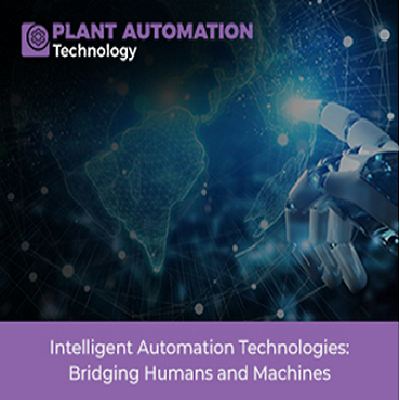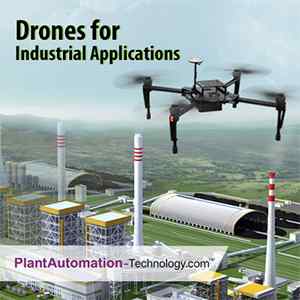Intelligent Automation Technologies: Bridging Humans and Machines

Introduction
In the fast-evolving landscape of technology, intelligent automation stands out as a transformative force that blurs the lines between humans and machines. Leveraging artificial intelligence (AI), machine learning, natural language processing, and robotics, intelligent automation goes beyond traditional automation to create a symbiotic relationship between humans and technology. This article delves into the world of intelligent automation, exploring its potential, challenges, and how it is reshaping industries while empowering the workforce.
Understanding Intelligent Automation
Intelligent automation is the integration of advanced technologies that enable systems to perform tasks with minimal human intervention while continuously learning from data and user interactions. Unlike conventional automation that follows predefined rules, intelligent automation employs AI algorithms and machine learning to adapt and make decisions based on real-time information.
One of the core components of intelligent automation is artificial intelligence, which enables machines to simulate human intelligence, understand natural language, and perform tasks that previously required human cognition. Machine learning, a subset of AI, allows systems to analyze data, identify patterns, and improve performance over time without explicit programming.
Moreover, natural language processing (NLP) allows machines to comprehend and respond to human language, enabling seamless communication between humans and machines. Robotics, often integrated with AI, empowers intelligent automation to have a physical presence, performing tasks that were traditionally reserved for human labor.
Intelligent automation has already made significant strides in various sectors, from revolutionizing customer service with chatbots to optimizing supply chain management through predictive analytics.
The Collaborative Workforce: Humans and AI Together
One of the central themes of intelligent automation is the synergy between humans and AI. Rather than replacing human workers, intelligent automation aims to augment human capabilities, freeing them from mundane and repetitive tasks to focus on higher-value activities.
The collaborative workforce, consisting of humans and AI working together, opens up new possibilities for innovation and productivity. For instance, in the healthcare industry, AI-powered diagnostic tools assist doctors in making accurate and timely diagnoses. The AI algorithms analyze vast amounts of patient data, helping physicians make informed decisions, and leading to improved patient outcomes.
In the financial sector, intelligent automation streamlines processes, such as loan approvals and fraud detection, with greater efficiency and accuracy. This enables human employees to focus on building customer relationships and developing strategic financial solutions.
Challenges and Ethical Considerations
Intelligent automation, while holding great promise, also presents a set of challenges and ethical considerations that require careful attention for responsible implementation.
One of the significant concerns involves the potential displacement of human jobs. As intelligent automation gains traction, certain roles may become redundant, leading to disruptions in the workforce. Organizations must acknowledge this issue and formulate strategies to reskill or upskill employees for new roles that complement the capabilities of AI.
Ethical considerations pertaining to AI decision-making are also paramount. As machines become more autonomous, ensuring transparency and accountability in AI algorithms becomes imperative. The presence of biases in AI decision-making poses another ethical challenge, as it can perpetuate existing inequalities. Striking the right balance between AI's autonomy and human oversight is crucial to upholding ethical standards.
To tackle these challenges, businesses and policymakers are collaborating to develop guidelines and regulations that encourage responsible AI use and mitigate potential negative impacts. By fostering a collaborative approach, we can create an environment where intelligent automation empowers both individuals and society at large while preserving ethical integrity and addressing the needs of the workforce.
Intelligent Automation in Specific Industries
Intelligent automation is making waves across various industries, transforming how businesses operate and deliver services.
In the healthcare sector, AI-powered medical imaging systems improve diagnostic accuracy, leading to earlier disease detection and personalized treatment plans. Additionally, intelligent automation streamlines administrative tasks, allowing healthcare professionals to focus more on patient care.
In manufacturing, robotics and AI-driven predictive maintenance optimize production processes, reducing downtime and waste. Human workers collaborate with robotic systems to enhance productivity and product quality.
Customer service has also experienced a paradigm shift with intelligent automation. Chatbots and virtual assistants handle customer queries 24/7, providing instant support and freeing up human agents to handle more complex issues.
Furthermore, the finance industry utilizes AI-driven algorithms for risk assessment, fraud detection, and personalized financial advice, fostering a more secure and customer-centric approach.
Preparing for the Future: Reskilling and Upskilling
To fully embrace the potential of intelligent automation, a proactive approach to reskilling and upskilling the workforce is essential. This entails identifying the skills that will be in high demand as automation becomes increasingly prevalent and equipping employees with the necessary tools and knowledge to excel in a tech-driven future.
Organizations can take the initiative by investing in comprehensive training programs and establishing partnerships with educational institutions. By doing so, they can ensure that their workforce remains adaptable and capable of harnessing the benefits of intelligent automation to the maximum extent.
Critical skills for the future workforce include problem-solving, critical thinking, creativity, and emotional intelligence. These uniquely human abilities synergize with the strengths of AI technologies, enabling employees to work collaboratively with automation systems and augmenting their overall productivity and effectiveness.
Incorporating a forward-looking approach to workforce development will not only help businesses remain competitive in the era of intelligent automation but also ensure a harmonious integration of human and machine capabilities, driving innovation and success across industries.
Embracing the Future: Opportunities and Collaboration
The future of intelligent automation offers numerous opportunities for innovation and collaboration. With machines handling repetitive tasks and data analysis, humans can focus on creativity, empathy, and complex decision-making. This shift can lead to breakthroughs in various fields, from scientific discoveries to creative endeavors.
Collaboration between humans and machines is crucial in refining AI algorithms and ensuring they align with human values. By working together, we can build an AI-powered future that addresses societal challenges, respects individual rights, and improves overall well-being.
The Continuous Evolution of Intelligent Automation
As technology evolves, so does intelligent automation. The future holds exciting possibilities, with advancements in AI and machine learning driving intelligent automation to new heights. As AI algorithms become more sophisticated, they can handle increasingly complex tasks, leading to improved decision-making and problem-solving capabilities.
In the realm of robotics, research, and development continue to push the boundaries of physical automation. Robots are becoming more adaptable, capable of working alongside humans in collaborative environments without compromising safety.
Moreover, natural language processing is improving, enabling machines to understand context and nuances in human communication better. This progress is facilitating more natural and seamless interactions between humans and AI, paving the way for more intuitive user experiences.
A Global Impact on Society and Workforce Dynamics
The integration of intelligent automation technologies is not limited to individual businesses; it has a profound impact on society as a whole. Governments, educational institutions, and industries are recognizing the need to adapt to this transformative shift.
On a societal level, policymakers are grappling with regulatory frameworks that ensure responsible AI use and protect against potential misuse of AI technologies. Additionally, governments are investing in AI research and development to remain competitive on the global stage.
The workforce dynamics are also undergoing significant changes. As intelligent automation takes on routine tasks, employees are being encouraged to embrace lifelong learning and cultivate soft skills that complement AI capabilities. This shift necessitates collaboration between businesses, academia, and governments to create a supportive environment for reskilling and upskilling initiatives.
Reshaping Education and Learning
The advent of intelligent automation technologies is reshaping the education landscape. To prepare future generations for a world with AI-driven technologies, educational institutions are incorporating AI and automation-related subjects into their curricula. Students are encouraged to explore AI ethics, algorithmic decision-making, and the potential impact of automation on various industries.
Moreover, online learning platforms are leveraging intelligent automation to personalize learning experiences for students. AI algorithms analyze learners' progress and preferences, tailoring educational content to meet individual needs and optimize learning outcomes.
An Inclusive and Ethical Approach
As the power of intelligent automation grows, an inclusive and ethical approach becomes paramount. Addressing bias in AI algorithms, ensuring transparency, and safeguarding data privacy are crucial steps in creating an AI-powered world that benefits everyone.
Collaboration between experts, stakeholders, and the public is essential to establish AI standards that prioritize human values and societal well-being. Building a global community that fosters responsible AI development and use will shape the future of intelligent automation positively.
Conclusion
Intelligent automation is a fantastic adventure that bridges the gap between humans and machines. The opportunities and difficulties posed by AI, machine learning, natural language processing, and robots will propel us toward a more linked and smarter future as technology advances.
To fully realize the potential of intelligent automation, we must collaborate with technology, encouraging a collaborative and inclusive attitude. We can create a world where people and intelligent automation coexist harmoniously, unleashing unparalleled creativity and empowerment for future generations by supporting continuous learning, ethical practices, and responsible implementation. Embracing the revolutionary potential of intelligent automation is about crafting a better future for humanity, not just industries.











